Sitios arqueológicos
Aunque la cultura maya sigue viva hasta el día de hoy, no cabe duda que los vestigios de sus grandes construcciones prehispánicas son una de las atracciones más importantes de Yucatán. Todos los sitios abren de 8 am a 4 pm los 365 días del año, y ofrecen entrada gratuita para residentes legales en México todos los domingos.
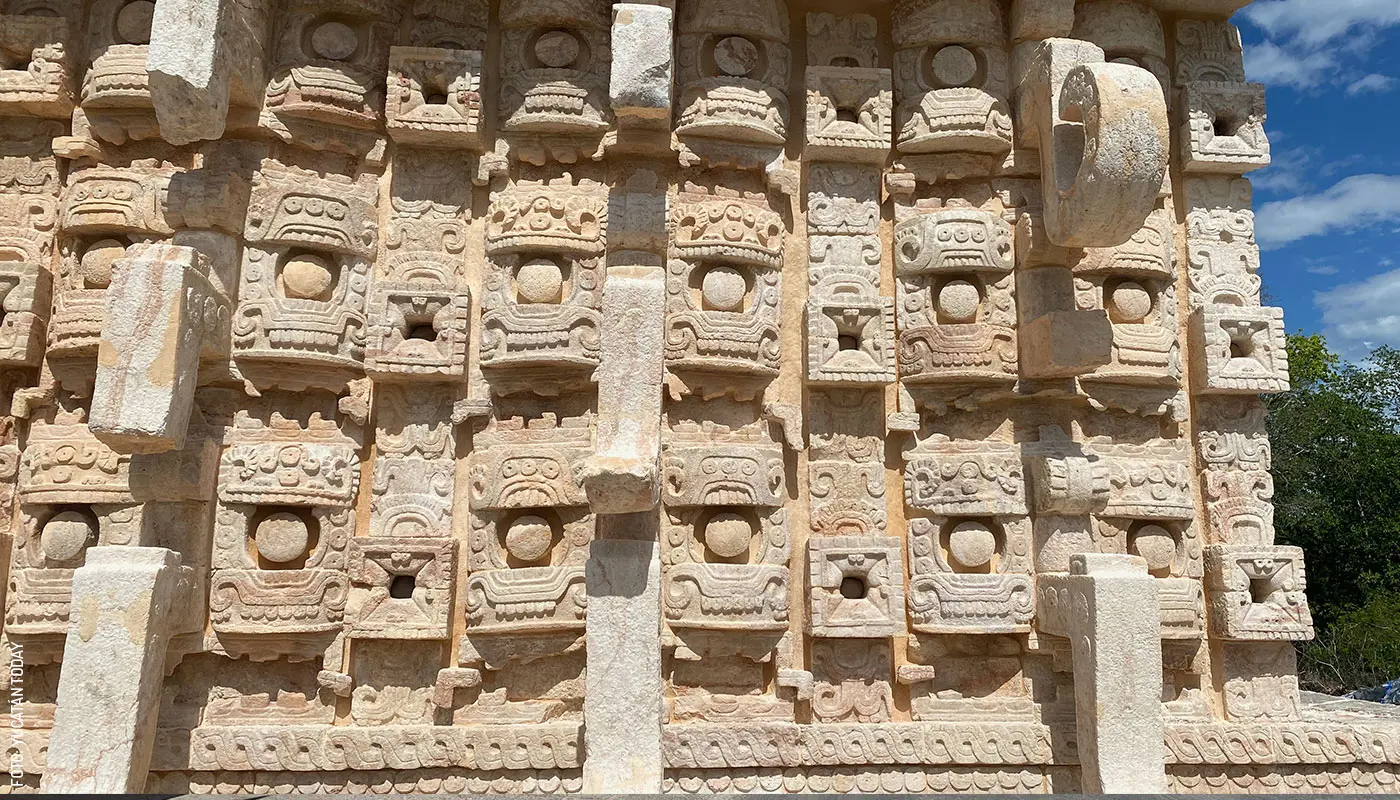
Los sitios arqueológicos mayas de Yucatán
De los aproximadamente 53,000 sitios arqueológicos que se conocen en México, son apenas 193 los que están abiertos al público. De ellos, 17 se encuentran en Yucatán. Aunque ninguno es más visitado que Chichén Itzá, cada uno de los sitios que visites te mostrará un lado distinto y una visión diferente de lo que fue la cultura maya prehispánica, y te proporcionará una experiencia completamente única.
- Todas las zonas arqueológicas de Yucatán abren todos los días, de 8 am a 4 pm.
- Los domingos la entrada es gratuita para los residentes, mostrando el documento que acredite su residencia (INE, pasaporte, formato migratorio).
- En Yucatán Today nunca nos referimos a los sitios arqueológicos como "ruinas"; esto nos parece una falta de respeto hacia las labores de reconstrucción y restauración que los arqueólogos llevan a cabo.
Los 17 sitios arqueológicos en Yucatán
El Instituto Nacional de Antropología e Historia (INAH) de México ha habilitado 17 zonas arqueológicas para ser visitadas en el estado de Yucatán. Es importante mencionar que, de ellas, algunas se encuentran cerradas al público temporalmente. Los sitios arqueológicos de Yucatán son:
- Acanceh (se pronuncia akankéj)
- Aké
- Balamcanché (cerrada temporalmente)
- Chacmultún
- Chichén Itzá
- Dzibilchaltún
- Ek Balam
- Izamal
- Kabah
- Labná
- Loltún (cerrada temporalmente)
- Mayapán (cerrada temporalmente)
- Oxkintok (se pronuncia oshkintók)
- Sayil
- Uxmal (se pronuncia ushmál)
- Xcambó (se pronuncia shcambó)
- Xlapak
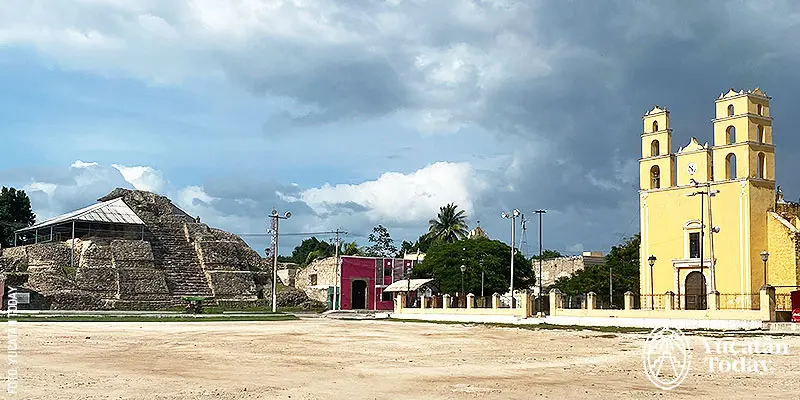
Acanceh (se pronuncia akankéj)
La ciudad de Acanceh reune en su plaza elementos de tres culturas: prehispánica, colonial y moderna. Junto a la iglesia y el mercado encontrarás la “Pirámide de Acanceh” que destaca por sus grandes mascarones ubicados en las esquinas de la plataforma de poco más de un metro a la que puedes acceder por sus escaleras metálicas, con una cuota de recuperación.
Un segundo sitio es “Palacio de los Estucos” que por el momento se encuentra cerrado al publico pero puedes velo desde la calle en pleno centro de la ciudad. Puedes ver los fragmentos de jeroglíficos rojos de figuras humanas mezcladas con animales. Se cree que todo el edificio contó con representaciones y glifos.
El tercer sitio es muy pequeño al final de una calle de la ciudad y es un observatorio.
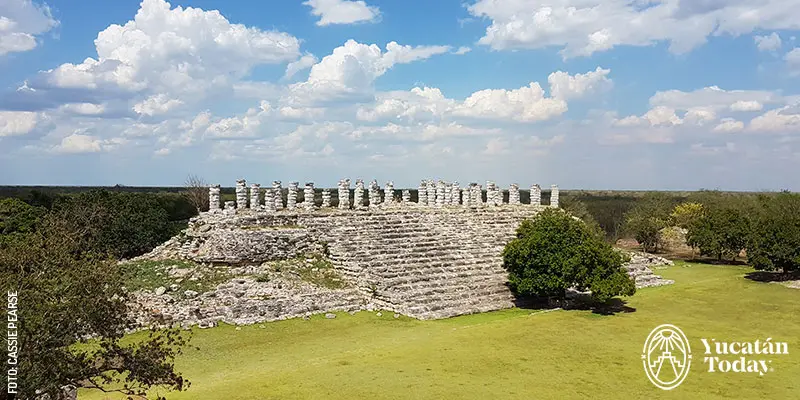
Aké
El sitio arqueológico de Aké ubicado en el pueblo con el mismo nombre se encuentra menos de una hora de Mérida y casi nunca hay gente. Puede que este sitio maya te parezca pequeño, pero en su apogeo tuvo gran importancia geográfica ya que estaba situada entre Mérida e Izamal (de hecho, había un sac bé que iba desde Izamal hasta Aké). Puedes pasar una hora aquí fácilmente en lo que subes escalones monumentales, exploras el sitio y observas las aves de presa. Haz que los niños cuenten los escalones, después ponlos a contar las columnas ¿Qué encontrarán? Mientras estás en la cima de los edificios, ve si puedes encontrar dónde se encuentran edificaciones sin excavar.
Si estás de visita entre semana, no olvides preguntar por un tour en la fábrica de henequén que está a lado de Aké para admirar la vieja maquinaria inglesa en la sección abandonada. Nos divertimos muchísimo explorando estas secciones en desuso y siguiendo las rieles del “truck” hasta donde terminan. Los niños pequeños se sentirán como exploradores aquí, solamente no olvides traer el agua y las botanas ¡Si no, serán exploradores muy deshidratados!
Balamcanché (cerrada temporalmente)
A 6 km de Chichén Itzá está Balamcnché. Debido a que es una caverna, aquí no verás grandes pirámides ni construcciones. Se han encontrado muchos artefactos en las grutas y cenotes de la península porque eran considerados como pasajes al inframundo por los mayas y eran sumamente importantes en prácticas rituales. Las dos paradas más importantes en un recorrido de Balamcanché son las formaciones naturales del Trono del Balam y la Ceiba Sagrada.
.webp)
Chacmultún
El sitio arqueológico maya de Chacmultún (chac = rojo / mul = montículo / tun = piedra) es uno de los últimos sitios en la conocida Ruta Puuc. Su nombre es gracias al uso abundante de piedra caliza roja utilizada para su construcción. El color de esta piedra se vuelve aún más evidente cuando está húmeda o mojada.
El sitio está compuesto por tres áreas principales que se pueden visitar, todas están ubicadas en alto y se rodean de un campo de tierra roja que sugiere la existencia de plantaciones de maíz desde tiempos mayas hasta el presente. La estructura más espectacular de todas es X’ethpool, ubicada en el punto más alto del sitio lo que significa que tendrás una vista absolutamente magnífica del área y sus alrededores desde ahí. La brisa que sentirás en la cima es un delicioso respiro después de la calurosa caminata por el campo de tierra roja y la subida por la pequeña colina.
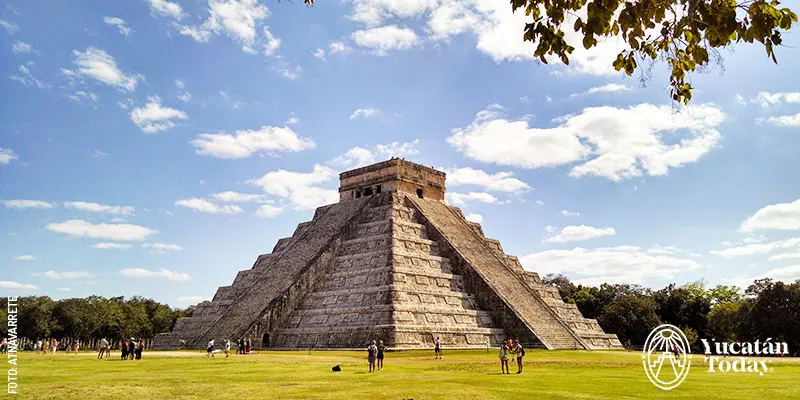
Chichén Itzá
La ciudad maya de Chichén Itza fue declarada Patrimonio de la Humanidad en 1988 y una de las Siete Maravillas del Mundo Moderno en el 2007. Es también el sitio arqueológico mas famoso en Yucatán y el mas restaurado por INAH. El símbolo de Yucatán y uno de los simbolos de México es el Castillo, donde desciende Kukulkán cada equinoccio. Pero tambien esta el Gran Juego de Pelota, el Templo de las Águilas y los Jaguares, la Plataforma de Venus, el Templo de los Guerreros, el Conjunto de las Mil Columnas, el Mercado, el Baño de Vapor, el Cenote Sagrado, el Osario, el Observatorio o Caracol, el Conjunto de las Monjas y La Iglesia.
En el 2023 abre sus puertas de manera muy controlada Chichén Viejo un espacio mas reducido pero no menos impresionante. Tienes acceso a ambos con el mismo boleto. Visita nuestro articulo para detalles sobre Chichén Viejo.
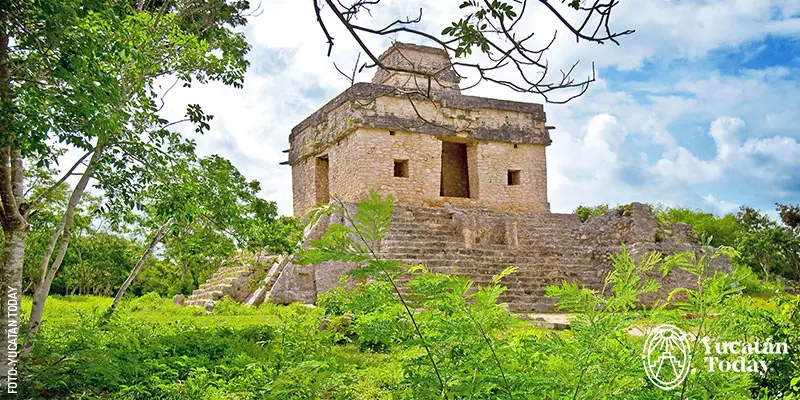
Dzibilchaltún
El Templo de las Siete Muñecas es lo mas famoso del sitio arqueológico maya de Dzibilchaltún, 16 km al norte de Mérida. Dzibilchaltún quiere decir «el lugar donde hay escritura sobre las piedras planas,» que se refiere a las muchas piedras memoriales encontradas en el sitio.
El Templo de las Siete Muñecas también es conocido como Templo del Sol, una estructura cuadrada que era el punto de enfoque de la ciudad. Este segundo nombre puede originarse del fenómeno que ocurre dos veces al año, en los equinoccios de primavera y otoño, cuando el sol amaneciente es visible por una ventana y sale de otra, un tributo al conocimiento matemático increíble de los Mayas. El templo está conectado al resto del sitio por un sacbé, o «camino blanco,» nombrado así porque originalmente fueron cubiertos de roca caliza blanca, construidos encima de piedras y escombro. En la noche puedes ser parte del video mapping itinerante dentro del sitio.
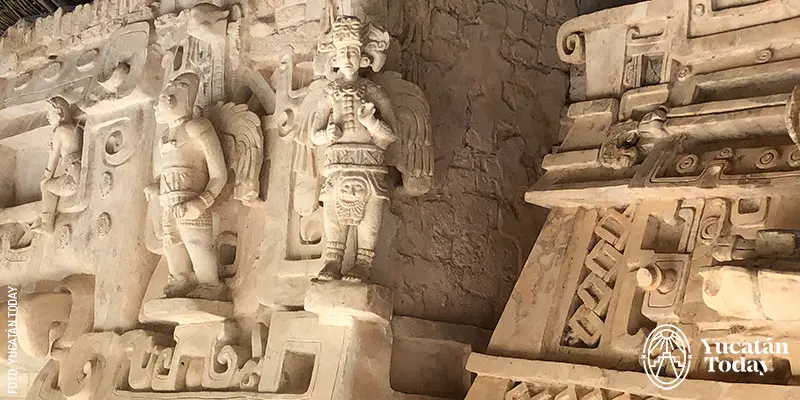
Ek Balam
Ek Balam, el jaguar negro, estaba en el pináculo de su importancia como una ciudad durante el Período Clásico Tardío (600-900 AC). Cuando los mayas abandonaron el sitio, pasó inadvertida, literalmente, mientras la densa jungla de Yucatán la encubría.
La Acrópolis es el edificio más grande, midiendo 160 metros de largo, 59 metros de ancho y 32 metros de alto. El palacio tiene seis niveles, en donde los niveles más altos eran habitados por los gobernantes, y los más bajos por la población de las ciudades.
Ek Balam, localizado justo al norte de Valladolid, es especial en otro sentido: nunca hay muchos turistas, y aunque es menos ruidoso y más pacífico que Chichén Itzá, no está completamente excavada ni provee las mismas facilidades y comodidades para el viajero.
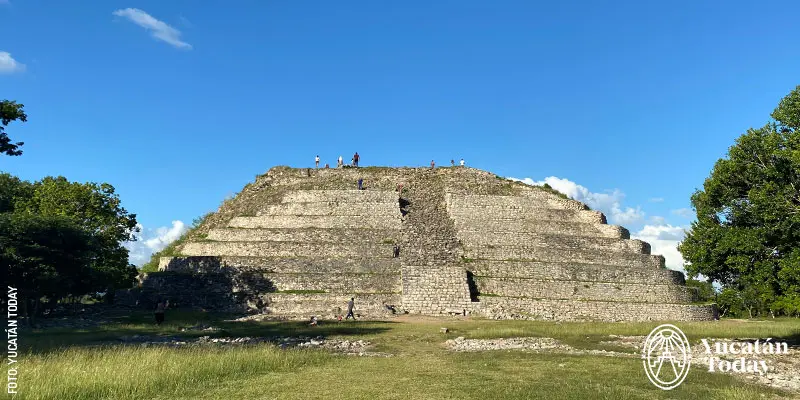
Izamal
Izamal es conocida por ser la Ciudad de los Cerros ya que la convivencia de los vestigios mayas con construcciones coloniales (como el convento de San Antonio de Padua) y, desde luego, la vida del México moderno, le han dado también el sobrenombre de Ciudad de las Tres Culturas.
Izamal narra una historia de más de 2500 años de ocupación. Como ciudad maya, su apogeo comienza en el Protoclásico (150 – 250 d.C.), y su declive en el Posclásico temprano (1000 – 1200 d.C.), cuando Chichén Itzá cobra mayor auge. Desde su plaza principal cuatro sacbés (calzadas prehispánicas) se extendían hacia cada punto cardinal; de ellos sólo sobreviven los que conectan con el sitio arqueológico de Aké (32 km hacia el oeste) y con Kantunil (22 km al sur).
Las pirámides que sobreviven hasta hoy son parte de la ciudad y, por lo tanto, su acceso es libre y gratuito todos los días de 8 am a 5 pm.
Todo mundo habla sobre Kinich Kakmó (y con justa razón, pues es una de las más grandes en México). Por eso, en esta ocasión, decidimos romper el molde y contarte un poco sobre cuatro pirámides recién abiertas al público: Habuk, El Conejo, Itzamatul y Chaltun Ha. Todas ellas son de acceso gratuito en un horario de 8 de la mañana a 5 de la tarde.
.webp)
Kabah
Kabah es reconocida por ser la segunda zona arqueológica más importante de la región Puuc después de Uxmal, y, próximamente, la sede del Museo Arqueológico del Puuc que debe inaugurarse a finales de este año. Tu recorrido comenzará en la que probablemente sea una de las construcciones más impresionantes que puedes visitar y admirar de cerca: el Codz Pop (Kots’ Poop, o petate enrollado), que es un edificio cuya fachada está completamente revestida de mascarones del dios de la lluvia, Chaac, tallados en piedra. Estando frente a ellos (y en cada parada de esta ruta), no olvides recordarte a ti mismo un dato que ya te mencioné: todos estos labrados y todas las construcciones se hicieron sin metal.
Tu recorrido continuará por lo alto del templo elevado, para luego descender de nuevo. Para este punto sentirás que Kabah es un sitio muy completo, y que ya viste muchas cosas impresionantes, pero el sitio de Kabah continúa cruzando la carretera, donde verás la Gran Pirámide y un arco monumental que, aunque es mucho más sobrio (menos decorado) que el de Labná, es también mucho más grande. Este arco marca el inicio de la ciudad al final del sacbé (camino blanco) que unía Kabah con Uxmal, y que se planea rehabilitar en el futuro, aunque no hay fecha definida.
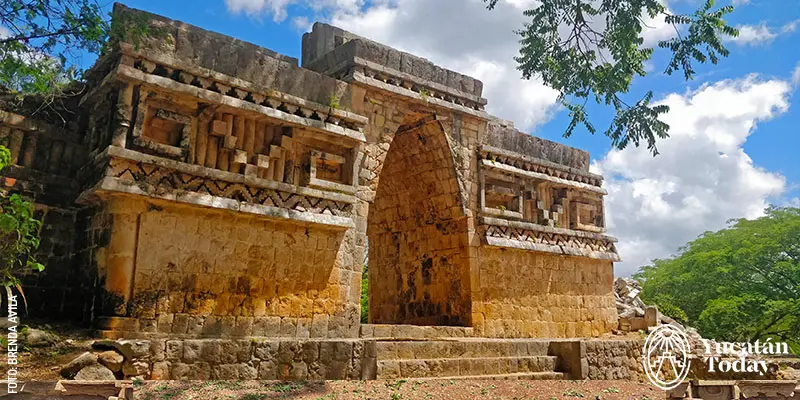
Labná
Entrando a Labná, entre árboles, te encontrarás con un edificio donde fácilmente podrás reconocer las características del estilo Puuc: muy geométrico, muy horizontal y muy ornamentado. Ahí mismo podrás admirar muy de cerca los junquillos, que son cilindros de piedra que evocan el bajareque (los palos que conforman las viviendas tradicionales mayas), además de relieves y mosaicos, esculturas y mascarones de Chaac. A partir de ahí, un pequeño sacbé (calzada) elevado te llevará a la que es, por mucho, la estructura más famosa de este sitio: el Arco de Labná. Monumental y altamente ornamentado, es un lugar perfecto para tomar fotos, pero no dejes de acercarte y examinarlo a detalle: en los recovecos de los relieves podrás apreciar restos (auténticos) de la pintura maya prehispánica con la que estaba decorado.
Loltún (cerrada temporalmente)
Su nombre proviene de los vocablos Mayas LOL y TUN, que significan respectivamente flor y piedra. Estas grutas localizadas a 110 km al suroeste de Mérida en la región Puuc son de las más grandes de la península de Yucatán y de las que más se han estudiado. En ellas se han encontrado evidencias de asentamientos humanos de hasta 7000 años de antigüedad. Se han encontrado osamentas de mamut, bisonte, felino y venado.
La gruta ha sido acondicionada para paseos turísticos por medio de senderos con iluminación. El recorrido de dos horas es de aproximadamente 1000 metros, y le lleva desde espacios parecidos a catedrales debajo de la tierra hasta lechos secos de ríos, hermosas y brillantes estalagmitas que parecen fuentes congeladas, y mucho más. Al final del recorrido se encuentra una majestuosa bóveda desplomada.
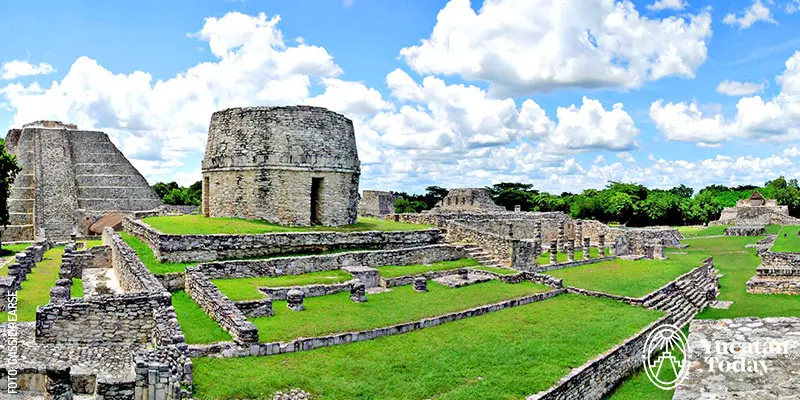
Mayapán (cerrada temporalmente)
Casa de la llamada Liga de Mayapán, la cual incorporó los reinos de los Itzáes en Chichén Itzá, los Tutul Xiu de Uxmal, y los Cocomes de Mayapán, Mayapán floreció después de que Uxmal y Chichén Itzá estuvieron en declive o fueron abandonados. Cuando visita este importante sitio, notará una semejanza sorprendente entre su construcción y edificios y los de Chichén Itzá; ésto no es mera coincidencia ya que la ciudad fue construida por un grupo de Itzaes que abandonaron Chichén Itzá.
Como Mayapán no está en la Ruta Puuc (como Uxmal) y está a más de dos horas de Cancún (a diferencia de Chichén Itzá) el sitio no es tan popular como esas conocidas atracciones; pero es muy accesible desde Mérida. Los magníficos edificios de Mayapán reposan resueltamente en quietud total, acompañados sólo por los sonidos de los pájaros en los árboles, esperando a los intrépidos exploradores quienes quieren experimentar la soledad y la magia de una gran ciudad Maya.
Oxkintok (se pronuncia oshkintók)
La zona arqueológica de Oxkintok han sido parcialmente escarbada. Parece haber sido una hermosa ciudadela de guardia durante el periodo clásico del 750 a 1050 D.C., con cuatro grandes plazas que desembocan en El Castillo, un templo central. Uno puede fácilmente subir hacia la cima del Castillo y maravillarse con una espléndida panorámica.
Una de las estructuras únicas en Oxkintok que no hemos visto en ninguna otra parte es la roca esculpida en forma de espiral.
Otra de las estructuras es la llamada «El Palacio del Demonio» ya que ostenta representar una columna esculpida plantada en la tierra que parece un demonio o un esqueleto. E incluso había un edificio llamado Palacio Pop, que hace referencia al tipo de mosaicos encontrados en el lugar. Yo creo que tiene el nombre excelente para un centro nocturno.
Sentada sobre la cima del Castillo, pude ver kilómetros hacia Campeche. Una mirada más cercana, pude ver varios cerros que parecen pirámides que son ciertamente estructuras no escarbadas. La ciudad Maya que una vez fue Oxkintok era realmente más grande de lo que el sitio arqueológico es hoy.
.webp)
Sayil
Vengas de Xlapak o de Kabah, Sayil te va a parecer un cambio extremo. Después de la maravillosa estela que está en exhibición a la entrada del sitio, sentirás que el camino para llegar a la primera estructura es mucho más largo que en otras zonas arqueológicas. Pero la espera habrá valido la pena, porque el primer edificio que verás es el Palacio, o Gran Palacio, que hace honor a su nombre al tratarse de una estructura de tres pisos y unas 90 habitaciones. A lo largo de sus 85 metros de fachada podrás admirar distintos grados de conservación, que son de cierta forma una manera de entender cómo está dispuesto su interior (el acceso a las habitaciones está cerrado). No dejes de asomarte a su parte de atrás; la construcción, con todos sus detalles en piedra parcialmente ocultos por la selva lo hacen parecer salido de una película de aventuras.
Pero aunque el Palacio es la vista más emblemática de Sayil, para nada es la única. El sitio incluye varios otros edificios, como El Mirador (muy similar al de Labná), o el fascinante Templo de las Jambas, que parece estar semi-enterrado, y por lo mismo, te permite ver de cerca los grabados que decoran los marcos (jambas) de sus puertas.
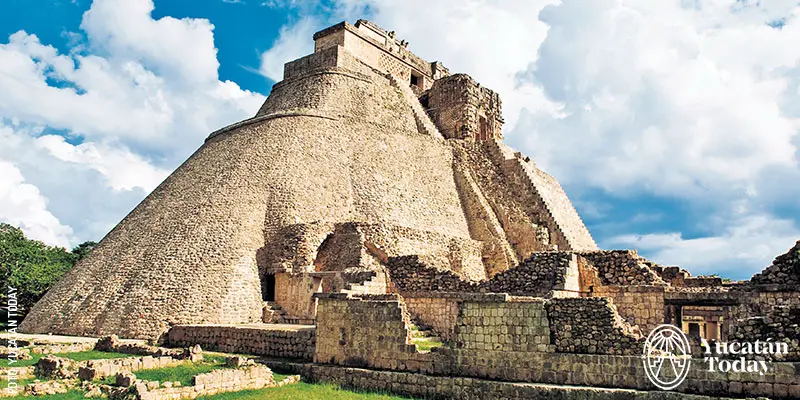
Uxmal (se pronuncia ushmál)
Uxmal es una antigua ciudad maya declarada Patrimonio Cultural de la Humanidad por la UNESCO en 1996, se ubica a 78 km de Mérida, aproximadamente a una hora. Su nombre proviene de “Oxmal” que se ha traducido como “la tres veces construida”.
La estructura más impresionante y con una altura de más de 35 metros (100 pies) es la “Casa del Adivino”. De acuerdo con una antigua leyenda, esta pirámide fue levantada por Itzamná en tan sólo una noche. En realidad se erigió en cinco etapas y se diseñó de tal modo que su escalinata da cara al oriente, hacia la puesta del sol en el solsticio de verano.
El Convento, otro de sus grandes edificios, bautizado así por los españoles quienes al verlo les evocó algún convento europeo. Probablemente fue utilizado como escuela de curanderos, astrólogos y sacerdotes.
El Palacio del Gobernador es un excelente ejemplo de trabajo de mosaico en piedra y cuenta con muy bellas esculturas del dios de la lluvia Chaac, serpientes y símbolos astrológicos.
No te pierdas el video mapping en la noche que relata la leyenda del enano de Uxmal.
.webp)
Xcambó (se pronuncia shcambó)
Xcambó es el único sitio arqueológico conocido sobre la costa del estado de Yucatán. Se considera uno de los sitios arqueológicos más antiguos, pues comenzó a poblarse en el Preclásico Tardío (alrededor del año cero de nuestro calendario) y estuvo habitado hasta alrededor del año 700 d.C., cuando comenzó a decaer, probablemente debido a cambios en las rutas del comercio. Sin embargo, su fama fue tal que hoy sabemos que durante el Posclásico (a partir del siglo XII y hasta la llegada de los españoles) había peregrinos que la visitaban para depositar ahí ofrendas.
Xcambó es una muestra del dominio que los mayas tenían sobre su entorno, pues se estableció sacando provecho del acceso a agua dulce en un islote en la costa. Sabemos que pasó de ser una pequeña aldea pesquera a un importante puerto comercial y salinero, que tuvo contacto con regiones tan lejanas como Veracruz, el Petén guatemalteco y la zona de Belice. Llegó a controlar un territorio extenso, pues existen sacbés que lo conectaban a las salinas aledañas de Xtampú, Misnay y Providencia, que dependían de la ciudad.
Otro detalle que los arqueólogos han podido confirmar es que Xcambó cumple con las características de un puerto comercial, pues se ha descubierto una amplia presencia de productos no locales y de prestigio. Lo que no aún no está bien establecido es cuál fue la naturaleza de sus posibles contactos con Izamal durante el Clásico Temprano, pues el lugar presenta una clara afiliación arquitectónica con dicho centro.
.webp)
Xlapak
Xlapak es el sitio más pequeño de los que se encuentran en la ruta Puuc, pero posiblemente el más sencillo de recorrer. A pesar de ser más reciente su ocupación que la de algunos otros sitios (y por un tiempo mucho más corto), su grado de conservación es mucho menor, lo que te permitirá darte una idea mucho más clara de lo laboriosos y delicados que son los procesos de restauración de las construcciones mayas.
La zona arqueológica de Xlapak está dispuesta a manera de un circuito (que se extiende un total de 900 m) a lo largo de los cuales irás visitando las distintas estructuras descubiertas; al ser ésta una de las zonas menos visitadas, el circuito de Xlapak es también prácticamente un sendero de naturaleza, donde podrás escuchar y ver distintos tipos de animales y plantas en un entorno mucho menos arreglado o contenido para el beneficio de los turistas.
Artículos relacionados
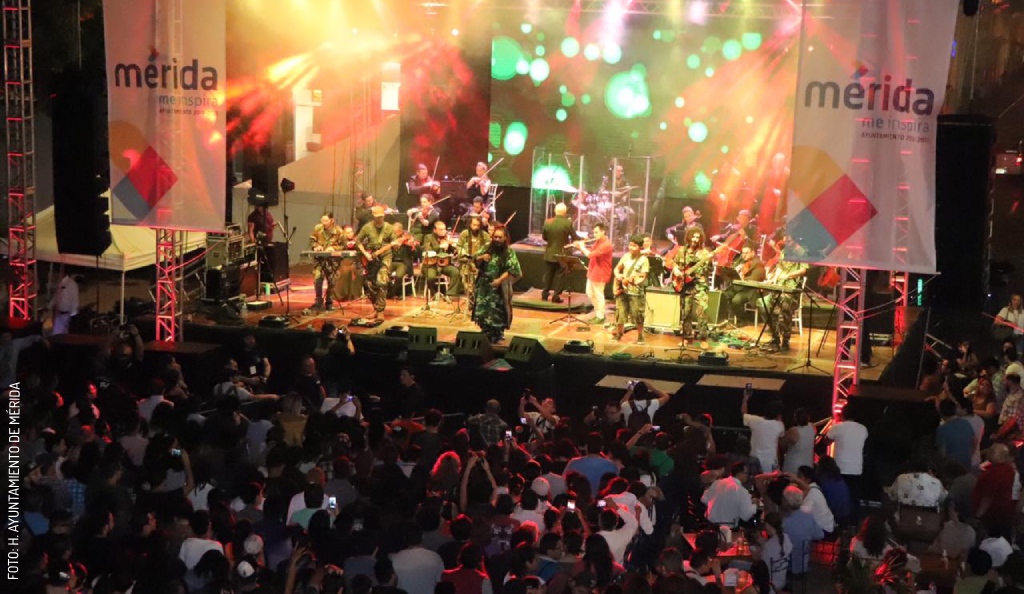
Qué hacer en Yucatán en mayo
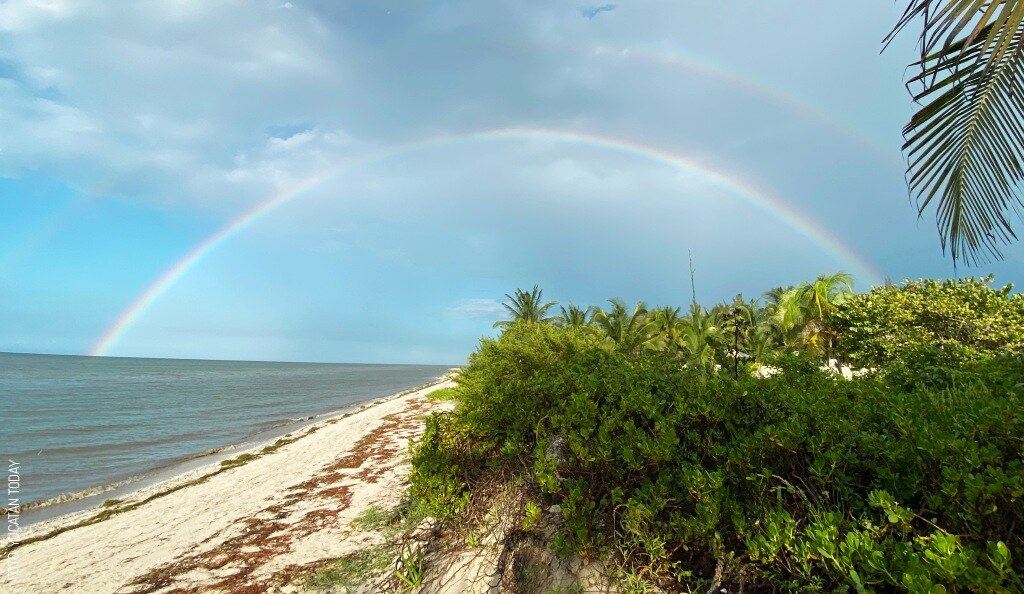
Estancia de Siete Días: Mérida, Uxmal, Motul, Telchac Puerto
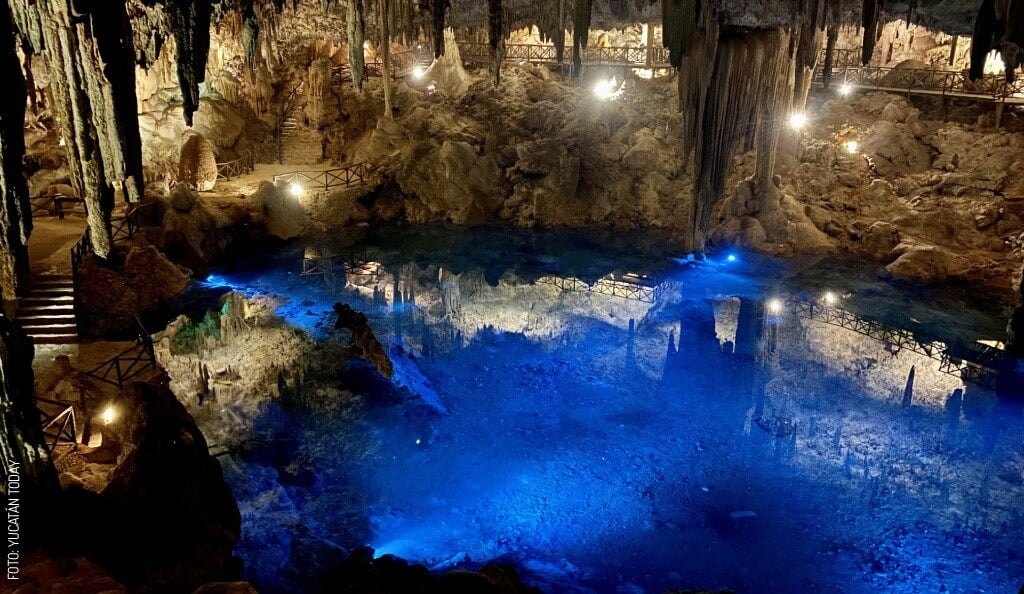
8 Rutas para elegir el cenote perfecto
Artículos relacionados

Qué hacer en Yucatán en mayo

Estancia de Siete Días: Mérida, Uxmal, Motul, Telchac Puerto




